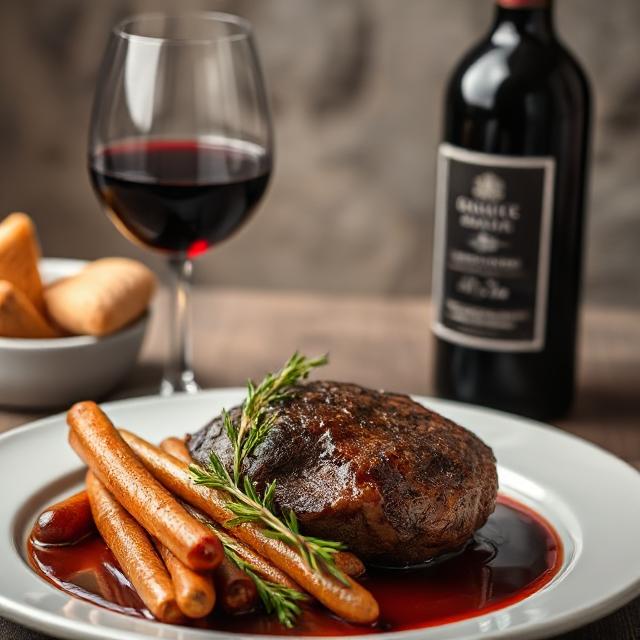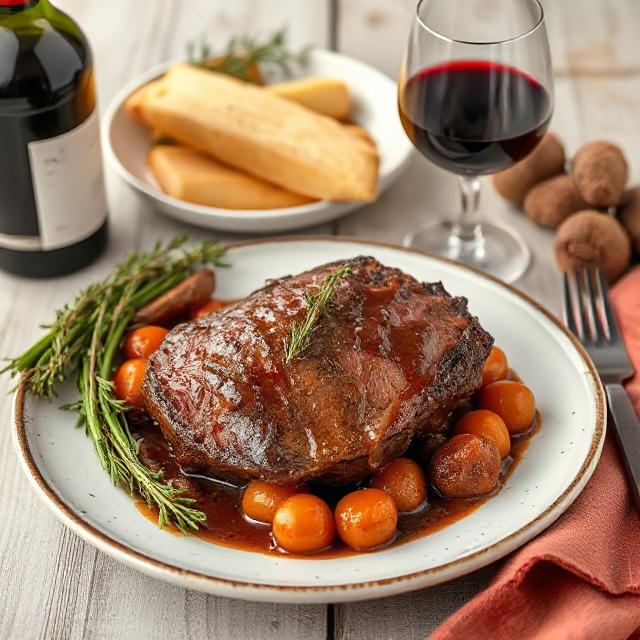
What type of wine pairs best with a pot roast?
A full-bodied reds, such as Cabernet Sauvignon or Syrah, pair best. Their rich and robust flavors complement the savory and hearty flavors of the dish.
Whether you’re a seasoned chef or an enthusiastic home cook, there’s something undeniably comforting about a tender, flavorful pot roast. The slow-cooked meat, the rich gravy, and the hearty vegetables all come together to create a meal that is both satisfying and delicious.
We believe in transparency. Our website contains affiliate links, which means that if you click on a link and make a purchase, we may earn a small commission at no extra cost to you. This blog post was inspired by Wealthy Affiliate, the world’s premier affiliate training hub. Check it out, it’s completely free to join
Exploring the World of Wine for Pairing
When it comes to pairing, reds are the way to go. Reds are known for their bold flavors, richness, and ability to pair well with hearty meat dishes like pot roast. The tannins in red wine, along with their acidity, help to cut through the richness of the meat and enhance its savory flavors.
The Role of Red Wines in Pot Roast Pairing
When it comes to pairing, reds play a pivotal role in enhancing the flavors of this classic dish. One red that pairs exceptionally well is the Cabernet Sauvignon. This wine, known for its boldness and richness, complements the savory meatiness of the dish.
The tannins in Cabernet Sauvignon, which give the wine its structure, blend well with the tender meat. These tannins, along with their acidity, cut through the richness of the meat, providing a perfect balance of flavors.
The black pepper and savory plum notes in Cabernet Sauvignon further enhance, adding depth and complexity.
Factors to Consider When Choosing a Wine
When selecting a pairing, there are a few factors to consider. First, consider acidity. Wines with high acidity can cut through the richness of the meat and gravy, balancing out the flavors. This acidity also helps to cleanse the palate.
Another factor to consider is the flavor profile. Wines with black pepper and spice notes can complement savory flavors. These flavors blend harmoniously with the meatiness of the dish.
Finally, think about your personal taste preferences. Different wines offer different characteristics, and finding one that suits your palate will ensure a more enjoyable experi

Now that we’ve explored the role of reds in pairing, let’s dive into some of the top red wine picks.
Cabernet Sauvignon: A Classic Choice
Cabernet Sauvignon is a classic choice when it comes to pairing. This wine, made primarily from the Cabernet Sauvignon grape, is known for its richness, bold flavors, and ability to pair well with red meat dishes. It offers a perfect blend of tannin and acidity, which helps to cut through the richness of the dish.
A blend of Cabernet Sauvignon, Merlot, and Syrah can also be a great choice. This blend combines the best characteristics of each grape, resulting in a wine that is rich, complex, and perfect for complementing the flavors of the meat. So, whether you opt for a single-varietal Cabernet Sauvignon or a blend, both are great options.
Syrah (Shiraz): A Rich and Spicy Option
Another red that pairs exceptionally well is Syrah, also known as Shiraz. Syrah, particularly those from Australia, is known for its spice, richness, and bold flavors. When paired, the spice and richness of Syrah will add a delightful contrast to the savory flavors of the meat.
The black pepper and vanilla nuances in Australian Shiraz complement the savory flavors of the dish. The high acidity of Syrah will also cut through the richness of the meat.
Malbec: For a Bold and Fruity Flavor
For those seeking a wine with a bold and fruity flavor, Malbec is a great choice. Malbec, originally from France but now widely produced in Argentina, is known for its fruitiness, richness, and smooth tannins. When paired, Malbec’s bold fruitiness adds a delightful contrast to the savory richness of the meat.
The plum notes in Malbec blend beautifully with the flavors of the dish, and its high acidity helps to balance the richness of the meat.
Merlot: A Soft and Smooth Wine
For those seeking softer smoother profile, Merlot is an excellent option. Merlot, known for its soft tannins, fruitiness, and approachability, offers a delicate contrast to the savory richness of the meal. Its smooth texture and plum notes harmonize beautifully.
How Wine Enhances the Flavor of Pot Roast
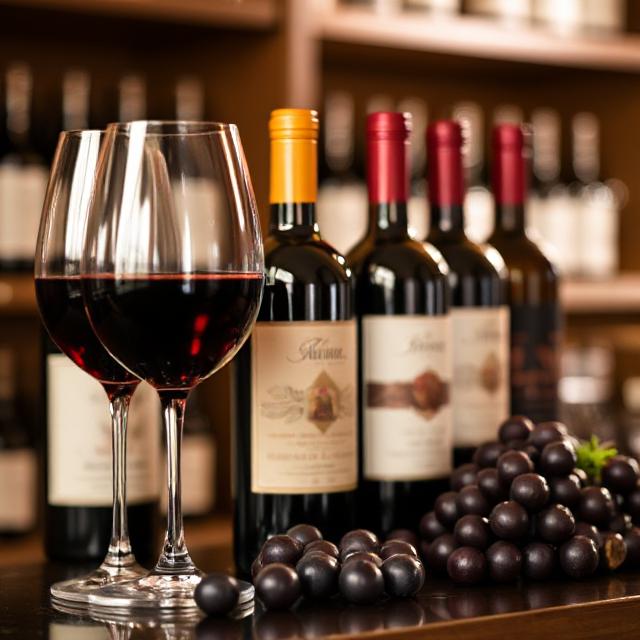
Now that we’ve explored the top red picks, let’s take a moment to understand how they enhance the flavor of this classic dish.
Pairing is not just about finding a complementary beverage, but also about enhancing the overall dining experience. The right wine can intensify the flavors of the dish, elevate its taste, and create a nice blend.
Incorporating Wine into the Cooking Process
Incorporating wine into the cooking process can take your pot roast to the next level.
Here are a few ways you can incorporate it:
- Create a flavorful and aromatic gravy by using a red, such as Syrah or Malbec, in the beef broth. It will add a depth of flavor and richness to the gravy.
- Infuse the pot roast with the rich, meatiness of a Zinfandel by adding it to the slow cooker along with the beef stew ingredients. This infusion will intensify the flavors of the meat.
- Consider using a high acidity wine, such as a Napa Valley Chianti, to balance the richness of the meal. The acidity will cut through any richness.
- When adding seasonings, consider using garlic powder, rosemary, and black pepper. These seasonings pair well with reds.
Creating Balance with Wine and Food
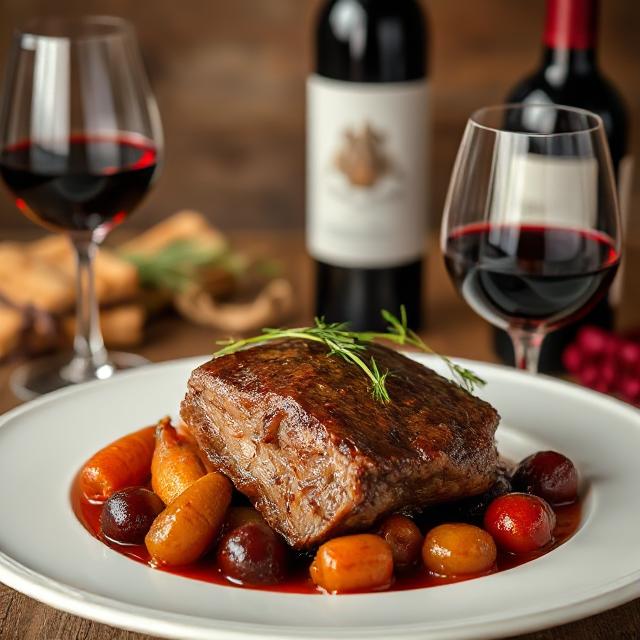
Creating balance is essential when crafting pairings. Consider the overall meal and how the wine will complement the flavors of the dish as a whole.
Think about the richness, the savory side dishes, and any accompanying sauces or gravies. Look for a wine that will enhance these flavors. Whether it’s a red with high acidity to cut through the richness of the meat, or one with fruitiness to complement the savory flavors, finding the right balance is key.
Tips for Serving Wine with Pot Roast
To fully enjoy the flavors of pot roast and wine pairing, it’s important to serve your wine correctly. Here are a few tips for serving wine with pot roast that will enhance your dining experience.
Temperature Guide for Pot Roast Pairing
Serving wine at the correct temperature is crucial when it comes to pot roast pairing. The right temperature can enhance the flavors of both, creating a more enjoyable dining experience.
For reds, such as Cabernet Sauvignon and Syrah, a good rule of thumb is to serve them slightly below room temperature. This allows their flavors to shine and complements the richness of the dish. Aim for a temperature of around 60-65 degrees Fahrenheit (15-18 degrees Celsius).
When serving whites, such as a Chenin Blanc, a slightly cooler temperature is recommended. Aim for a temperature of around 45-50 degrees Fahrenheit (7-10 degrees Celsius).
What if I Don’t Drink Red? Can I Pair Pot Roast with White?
While reds are the classic pairing, it’s not the only option. Whites can also complement pot roast, particularly if you prefer a lighter, more refreshing pairing.
What type of wine pairs best with a pot roast?
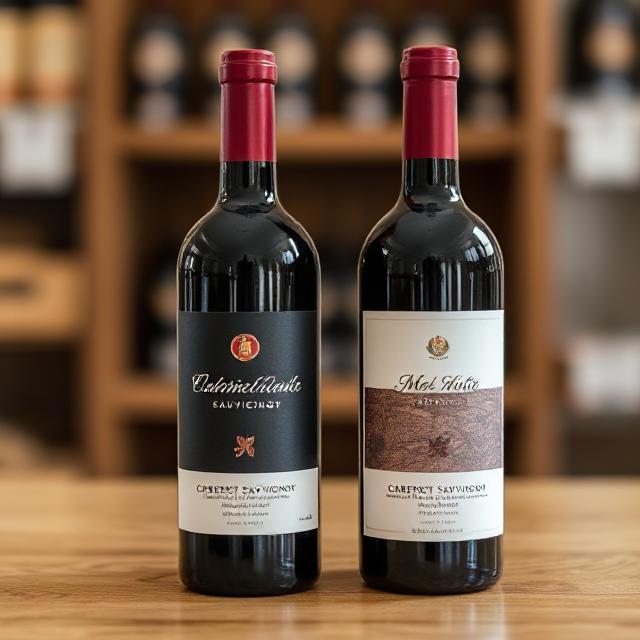
For pot roast, a full-bodied red wine like Cabernet Sauvignon or Merlot is ideal. These wines complement the rich flavors of the meat and enhance the overall dining experience. Additionally, a bold Zinfandel can also work well, bringing out the savory notes of the dish beautifully. Enjoy your meal!
If you don’t drink red, consider pairing pot roast with a white, such as a Chenin Blanc. Known for its perfect balance of acidity and fruitiness it can provide a delightful contrast. Its crisp, refreshing flavors meld well with meat dishes, and it adds another dimension.
So, if you’re looking for an alternative, don’t hesitate to explore the world of white wine for pot roast pairing. You might be pleasantly surprised by the delicious flavors and dining experience it adds to your meal.
Conclusion
From the classic choice of Cabernet Sauvignon to the bold and fruity notes of Malbec, there are plenty of options to choose from based on preference. Don’t be afraid to experiment and try different notes to find the perfect pairing for your dish.
And if you’re not a fan of reds, there are also white options that can complement in their own unique way.

